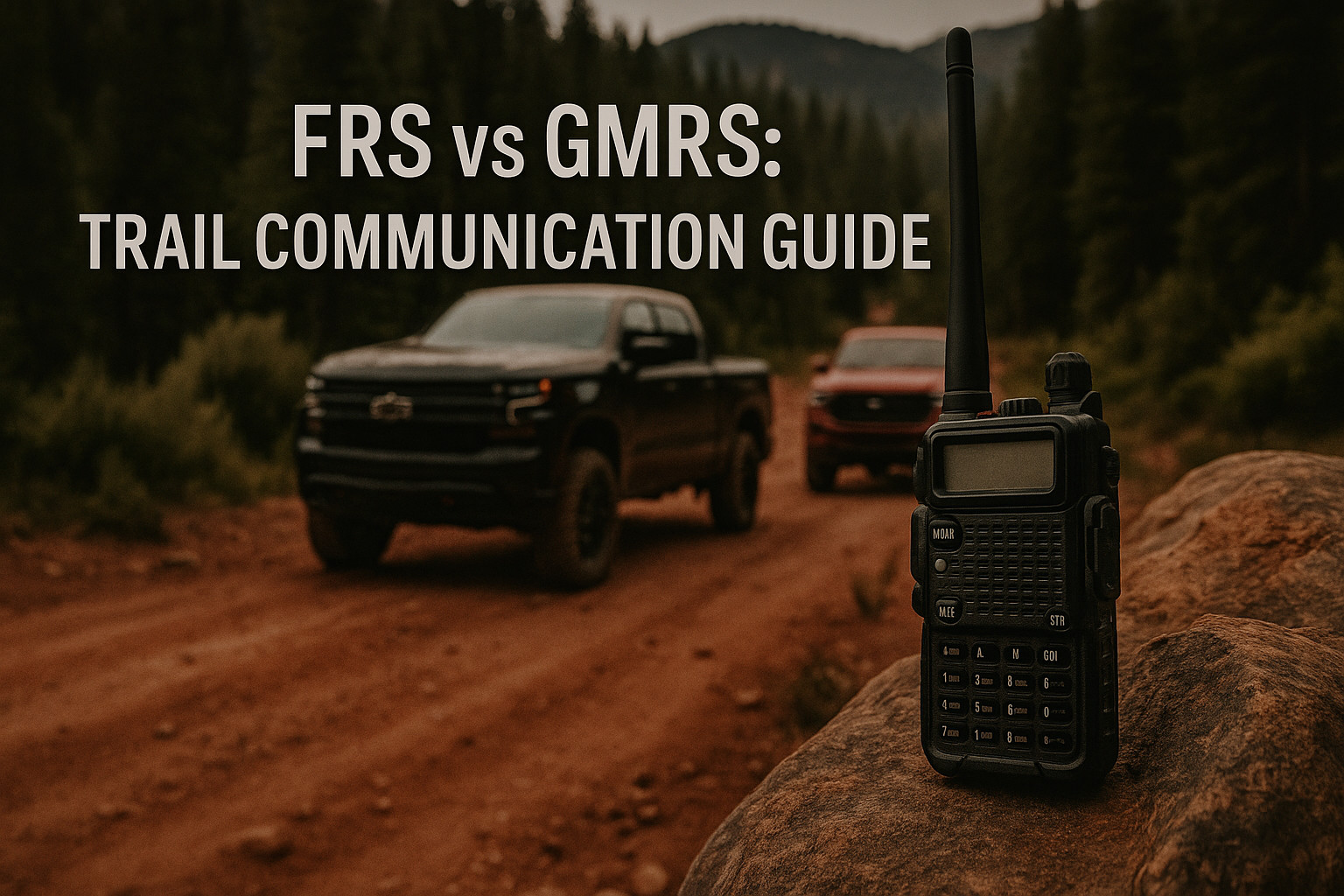📻 FRS vs GMRS: What Actually Works Out on the Trail
A calm, capable guide from real use
We didn’t get into radios for the tech. We got into them because cell phones stop working out here.
Whether we’re crawling through deep woods, spotting a recovery, or just trying to see if the next rig made it across the washout, radios make a difference. But if you’ve ever Googled “trail communication,” you’ve probably seen FRS and GMRS pop up. And it’s not immediately obvious what the difference is — or whether you actually need a license.
So here’s the version that makes sense when you’re standing in the garage, prepping for the next trip.
👋 FRS: The Starter Kit
You’ve seen these — walkie-talkies from Walmart, Amazon, or that blister-pack hanging on the wall at Bass Pro. FRS stands for Family Radio Service. Think: turn them on, pick a channel, go.
They work best when you’re within shouting distance anyway — spotting someone over an obstacle, or lining up for the next trail section.
Why it works:
- No license
- Cheap
- Simple to use
Where it falls short:
- Real-world range is rarely more than half a mile
- You can’t upgrade the antenna
- You’re limited to 2 watts of power — not much in a forest
FRS works when your convoy is tight. If the group spreads out or terrain gets more rugged, you’ll notice the gaps.
📡 GMRS: Built for Distance
GMRS — General Mobile Radio Service — is what most serious off-roaders end up with. It looks the same at first glance but performs completely differently. More power. Removable antennas. Access to repeaters.
What it gives you:
- Extended range (real range, not box-sticker claims)
- Detachable antennas and mobile/base unit options
- Clearer audio and stronger signals in dense terrain
What it asks of you:
- A $35 FCC license (good for 10 years)
- A little etiquette (call signs, timing)
- Slightly higher price tag
Still no test. Just a form, a fee, and your household is covered.
🛠 Real Talk: Why Licensing Actually Matters
It’s not about gatekeeping — it’s about keeping frequencies clean. GMRS uses more power, which means more potential for interference. So yes, you can buy a GMRS radio and hit the button without a license… but you’re not really supposed to.
People do monitor those bands, and misuse gets called out. If you’re building radios into your setup, doing it right is worth the few minutes it takes.
🏞 On the Trail: FRS vs GMRS
Here’s where it becomes real:
Small Group, Close Range
Just a few of you out riding and never more than a hill apart? FRS is probably fine. It’s also easy to hand a spare to someone without overthinking.
Big Event or Trail Run
If the rigs stretch out — and they will — FRS drops fast. GMRS will keep you in contact, even over rolling terrain.
Overlanding or Multi-Day Backcountry
This is where GMRS shines. Handhelds in camp. Mobiles mounted in rigs. Clean comms across valleys or between groups. Worth every bit of setup.
🧾 Getting Your GMRS License (Quick Version)
- Head to the FCC’s License Manager
- Register for an FRN (if you don’t have one)
- Choose “Apply for a New License” → Select “ZA – General Mobile Radio (GMRS)”
- Fill out the form and pay $35
- You’ll have a call sign in minutes
No test. No renewal for a decade. Done.
Final Thoughts
Radios might not be the flashiest gear on your rig, but when you need to say “hold up, we’ve got a recovery,” they’re priceless. If your trips stay short and close, grab a pair of FRS walkies and hit the trail. If you’re going further, exploring deeper, or riding with larger groups, it’s time for GMRS.
Just one more small tool that makes the bigger experience smoother.
